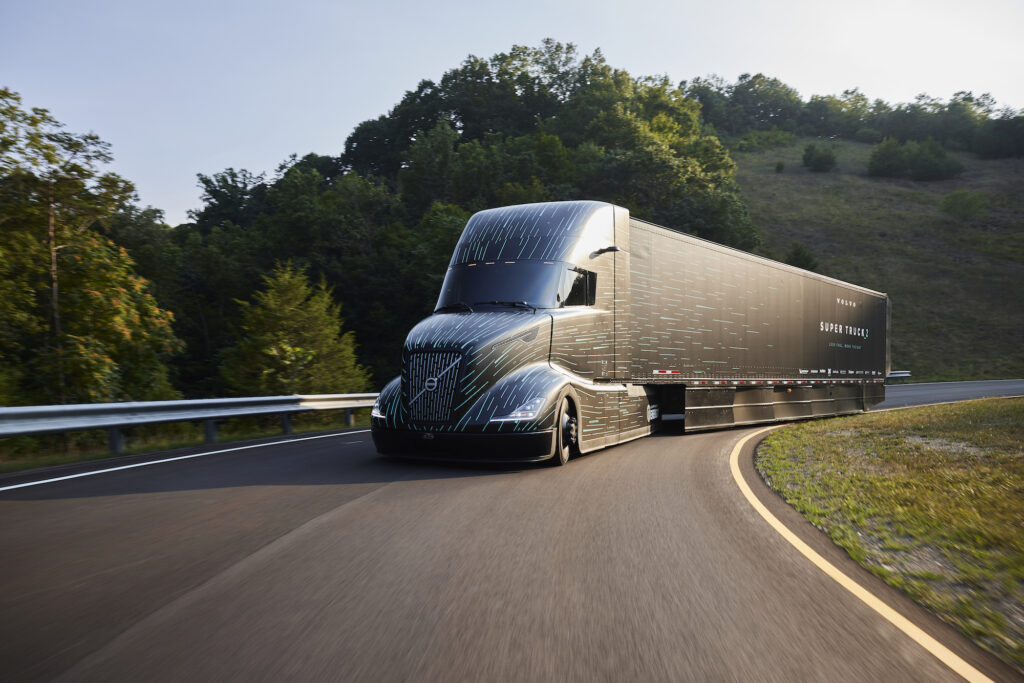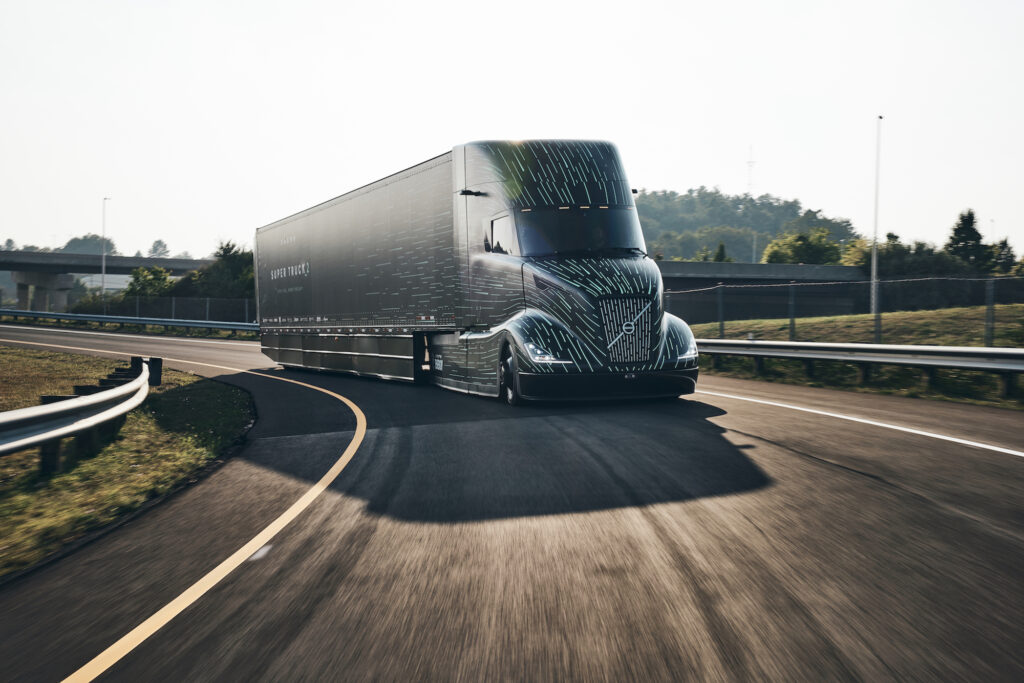Volvo’s SuperTruck 2 exceeds efficiency targets
Volvo Trucks has revealed its SuperTruck 2 project exceeded the freight efficiency goals it established, thanks to aerodynamics and advanced engineering.
The SuperTruck 2 program is funded in part by the U.S. Department of Energy, which tasked OEMs to achieve a 100% increase in freight efficiency over a 2009 baseline. Volvo says its project exceeded the target, achieving a 134% increase in freight efficiency.
The company will reveal its SuperTruck 2 at the American Trucking Associations Management Conference & Exhibition in Austin, Texas, Oct. 14-17.

“Partnering with the DOE for the SuperTruck program provides an exciting opportunity to push the technology envelope to see what’s technically possible for heavy-duty transportation and which solutions can be scaled into production, but equally important, which solutions don’t work for scaled production,” said Peter Voorhoeve, president, Volvo Trucks North America.
“We are extremely proud of the accomplishments of our advanced engineering team who worked on SuperTruck 2. A program of this magnitude pushes the limits in every possible area — creativity, problem solving, feasibility and innovation, to which we feel we did successfully. Some of the technologies on SuperTruck 2 will most certainly shape the future of trucking and change everything we once thought possible.”
Improving freight efficiency
The SuperTruck program is intended to accelerate technologies that will improve freight efficiency. It’s expected some of the technologies utilized will make their way into commercial production.
Volvo focused on advanced aerodynamics for its project, with a wedge-shaped cab featuring a wraparound windshield and downsized cooling package. Gap fairings, skirts and a boattail add to the aerodynamics. The truck replaces standard door-mounted mirrors with cameras, reducing drag by more than 4%.
The SuperTruck 2 vehicle reduced drag by 50% compared to Volvo’s 2009 baseline, and 20% compared to SuperTruck 1. The first iteration was a modified version of the VNL 670 cab, while SuperTruck 2 features a newly designed cab.
Engineers also slashed weight using a 4×2 configuration and shorter cab paired with an aluminum chassis and lightweight drive axle system with a single composite driveshaft. The total curb weight of the tractor and trailer totaled just 27,000 lb.

Volvo worked with a tire maker to supply smaller and lighter 19.5-inch low-friction tires. A trailer partner supplied a custom lightweight aerodynamic trailer with a shape that matched the tractor to provide a seamless unit.
Other features include a 48-volt micro-hybrid system that acts as a generator and integrated starter to provide cab comforts.
“The project team deliberately focused on driving in real world conditions for testing. Data wasn’t just gathered in a lab or on flat, empty roads with optimal conditions and a light load. Instead, our SuperTruck 2 was tested in real-world scenarios on roads with traffic and elevation changes with a GCVW of 65,000 lb.” Voorhoeve said.
“This is the most aerodynamic and efficient truck Volvo has built to date, and we achieved a freight efficiency that demonstrates the potential for technology innovations to be developed commercially. Our engineers have already begun implementing some of the learnings from SuperTruck 2 into our future truck models. The future of trucks is just around the corner.”
Have your say
This is a moderated forum. Comments will no longer be published unless they are accompanied by a first and last name and a verifiable email address. (Today's Trucking will not publish or share the email address.) Profane language and content deemed to be libelous, racist, or threatening in nature will not be published under any circumstances.
So what mileage did SuperTruck 2 actually achieve?